Digging into facts and the field, UIC anthropologists aid search for war veterans
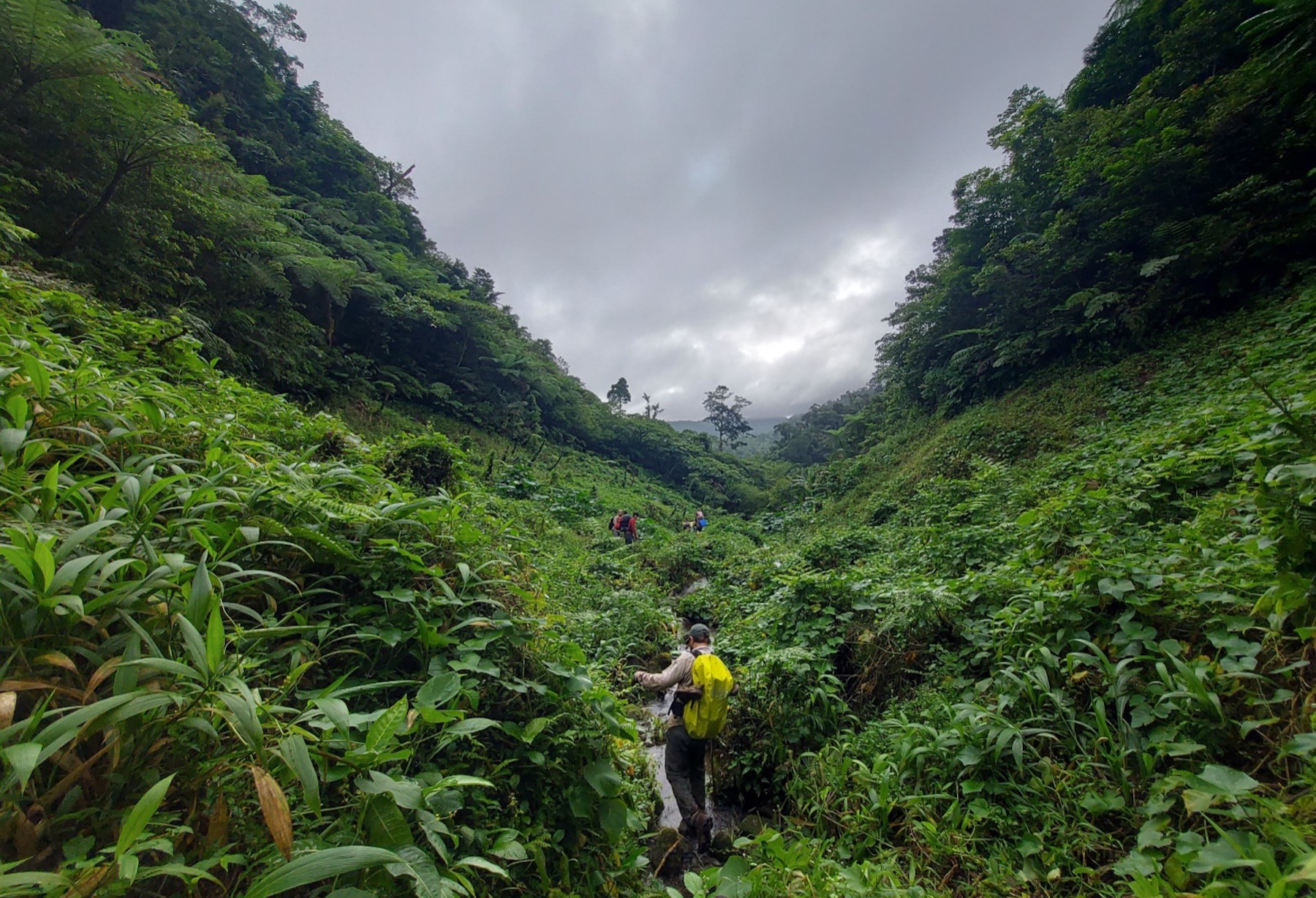
UIC Center for the Recovery and Identification of the Missing investigators on the way to a possible World War II-era aircraft crash site in the Philippines. (Photo: Ivan Cultura/National Museum of the Philippines)
In June 1945, 2nd Lt. Hulen A. Leinweber was shot down and killed while piloting a plane in the Philippines just months before World War II ended. Military personnel searched the area where the 21-year-old’s plane crashed but discovered no remains; in 1947, Leinweber was named one of tens of thousands of non-recoverable WWII soldiers.
But over 70 years later, Leinweber’s family finally received closure as the veteran’s remains were discovered and identified, thanks in part to the efforts of a unique University of Illinois Chicago research center.
“It’s everything because they would never leave people behind,” said Leinweber’s niece Candice Stewart in a 2018 news report. “The fact that they really go out there and really do try to get them back no matter what or where the lines are drawn…It’s pretty great.”
Leinweber’s recovery is one of many cases worked on by the Center for the Recovery and Identification of the Missing, or CRIM. Based in the UIC Department of Anthropology and the Office of Social Science Research, the group partners with the military’s Defense POW/MIA Accounting Agency on searches for WWII and Vietnam War service members lost in the Philippines, Vietnam, Cambodia, Italy, Laos and Palau.
In doing so, the center applies the approaches of anthropology and archaeology to the challenge of investigating decades-old mysteries in often uncompromising locations. UIC faculty, postdocs, students and staff participate in every step of the mission: digging into military records and obscure websites to research the soldier’s disappearance, developing new technologies to narrow down the search area and going out into the field to excavate the site.
The work provides anthropology students with valuable research and work experience on a meaningful mission that ties back to the origins of UIC itself.
“I like to emphasize to our team that our first graduating classes at UIC were 75% World War II veterans,” said John Monaghan, professor of anthropology. “It’s a nice full circle story for our undergraduates today to learn about and honor the memory of the sacrifices of that generation.”
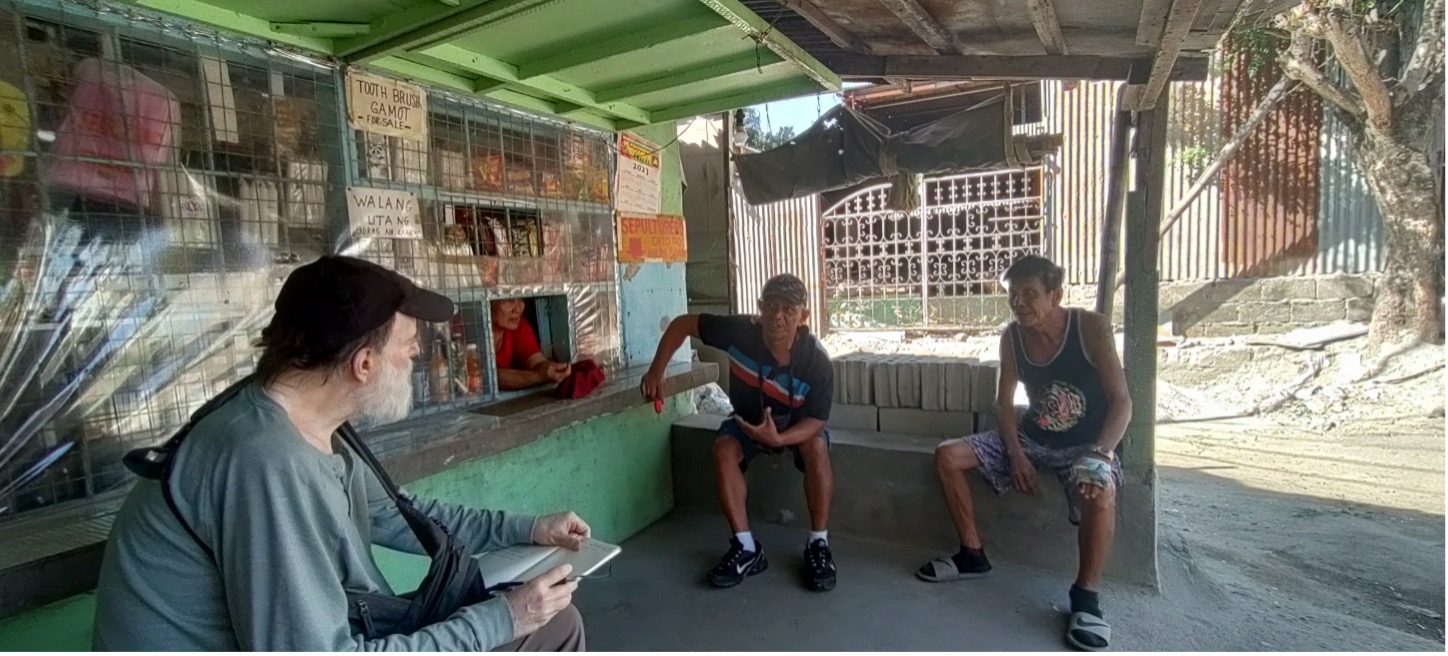
UIC’s John Monaghan (left) interviews the sepulturero, or cemetery caretaker, in Mabalacat, Pampanga Province, Philippines, for information about potential WWII dead in cemeteries around Clark Airfield. (Photo: James Meierhoff)
Reconstructing the narrative
In 2010, members of Sen. Dick Durbin’s office contacted Monaghan with an intriguing offer: Could UIC anthropologists help the military in their search for missing service members? While most public attention focuses on MIA/POW efforts in Vietnam, U.S. agencies also look for unrecovered remains from World War II, the Korean War and other past conflicts. But the scale and difficulty of the work requires them to reinforce their efforts with outside partners, including universities.
Monaghan partnered with Keith Phillips, a retired insurance executive who is now a research specialist with CRIM, on a proposal in the Philippines, where more than 20,000 American soldiers were killed or captured in WWII and where UIC anthropologists, including Professor Laura Junker, had significant experience. The Defense POW/MIA Accounting Agency funded a demonstration project in the country and trained UIC graduate students as scientific recovery experts.
Since that origin, the partnership has expanded to dozens of cases, often focused on hard-to-reach sites and investigations that stalled long ago. Specific cases are suggested either by the Defense POW/MIA Accounting Agency or by researchers at the UIC center, who look through military records and identify potentially promising leads.
Once selected, researchers build a case narrative to piece together where a service member’s remains are likely located, focusing on where a plane went down or where a unit was locked in battle. The process is more difficult than it may seem because they are working with gap-filled documents, 80-year-old maps that may not correspond with modern versions and locations that are hard to reach or dangerous.
They generally start with official information such as personnel files or incident reports provided by the Defense POW/MIA Accounting Agency or found on Fold3, a public database of military documents. But often valuable clues come from alternate sources: unit histories, unofficial newsletters, memoirs and photographs. CRIM researchers find these and other scraps via websites created by amateur historians or veterans organizing reunions with their units.
“It’s an incredible addendum to what is official and sometimes it really paints a fuller picture than what the military documents alone provide,” said Elizabeth Goodman, CRIM director and assistant clinical professor of anthropology. “Some of these cases really have had very little attention since World War II, and so we start that research by asking if there is any indication that we know where to look. If we’ve got good evidence that we can start to narrow down where the aircraft is, then the DPAA will say we can go out and do an investigation.”
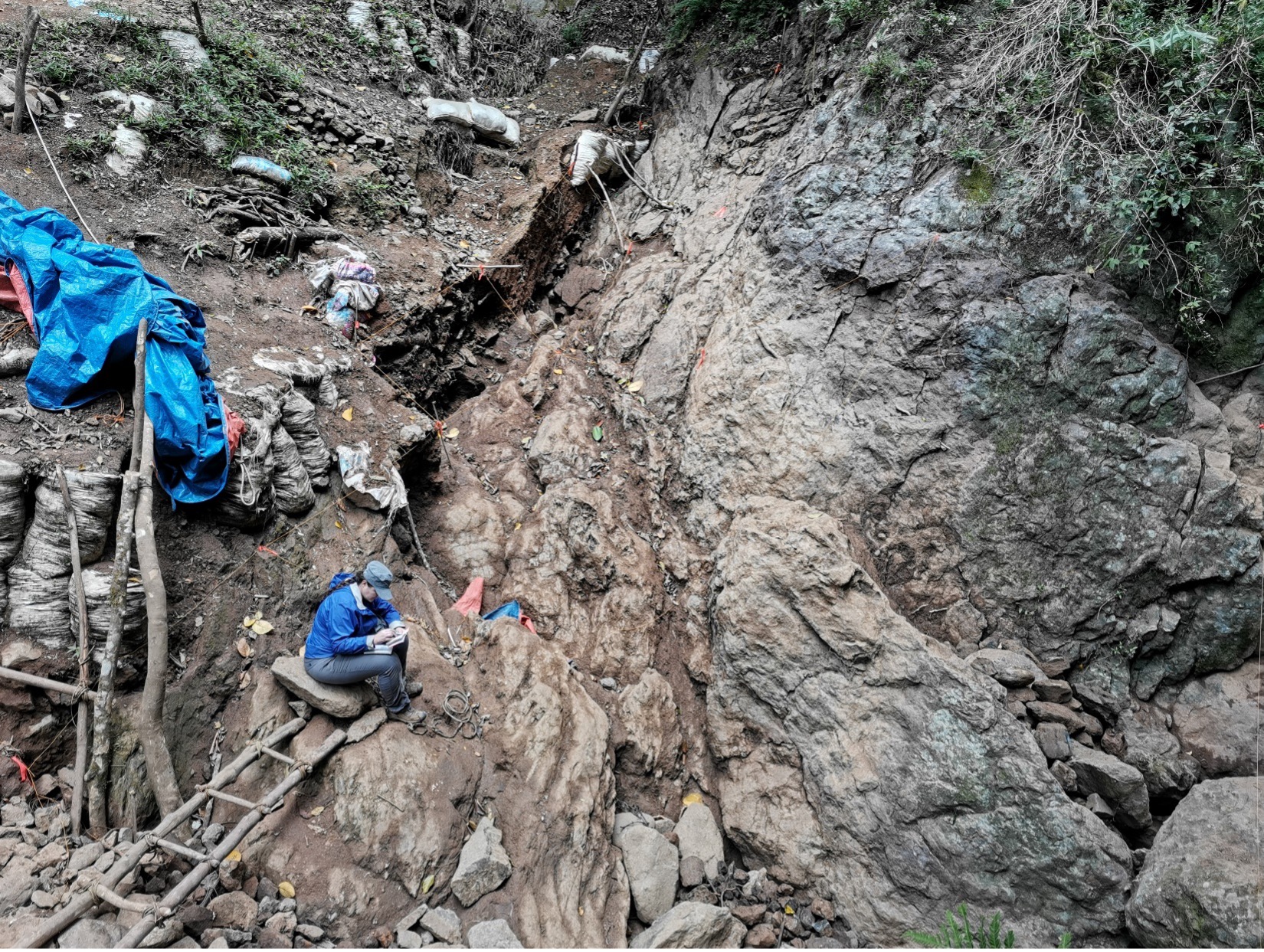
Lead archaeologist Kendall B. Hills of UIC takes notes at the bottom of an excavated site.
(Photo: Gregg Abbang/National Museum of the Philippines)
Digging for answers
Once approved to go into the field, CRIM researchers start with traditional ethnographic methods, working with local officials and experts from the National Museum of the Philippines to talk to people in the region about whether they have knowledge of a crash site or memories from the war.
“It could be another day of bushwhacking and knocking on doors and walking through people’s cornfields with them, or you could get lucky,” Goodman said. “It’s thrilling work. There’s nothing like finding an airplane — it’s magical.”
One current site where the UIC researchers work in the Philippines is a sheer limestone cliff, where the excavation team must sleep in hammocks for lack of flat ground and rely on mountaineers to ensure safety during digs. Landslides have reshaped the site since the crash, moving the wreckage to unpredictable locations and making the area unstable during excavation.
“The sites are typically ridiculously challenging,” Goodman said. “They only exist because they’re in remote places where people don’t go very often, or it’s too difficult for scavengers to drag the metal out of the location.”
Within a wreckage site, the team looks for signs that they are near the service members’ remains, such as machinery from the cockpit or the gunner’s compartment. They know they’re close when they start finding personal items such as coins or weaponry.
“The way to think about it is like a dartboard,” said Caleb Kestle, visiting research associate professor with CRIM. “You have the materials from the plane as the outer ring, then materials from the right part of the plane, then the materials the person had on and around them. The bullseye right in the middle is actually finding human remains. You’re just finding material evidence as best you can.”
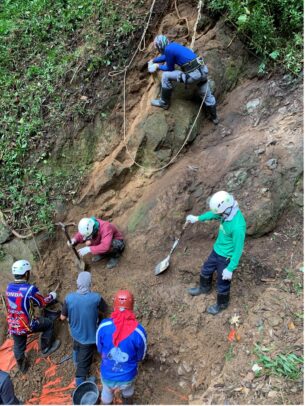
Once found, the remains travel to the Defense POW/MIA Accounting Agency laboratory in Hawaii, where experts use a combination of dental records, skeletal details such as height or age, DNA testing and evidence such as dog tags or other recovered possessions to make an identification.
“It is a powerful experience, because we’re working on finding someone’s brother, father, uncle or son,” said Andrew Kracinski, a master’s student in anthropology who has worked on excavations with the center. “It’s also a very rewarding feeling; you finally bring closure to people who maybe haven’t seen their relative in 80 years.”
Technology, AI aid field searches
While much of the fieldwork is still done with shovels and trowels, CRIM is now deploying newer technologies to help make their searches more effective. One important tool is geographic information systems, which can create visualizations and models that go far beyond traditional maps.
As the team reads through documents on a case and identifies locations of interest, visiting research associate professor David Reid plots that data, using a mixture of satellite imagery, hand-drawn maps from the war, ecology, geology, weather and clues such as a flight plan or the location of wreckage. Expeditions then bring that layered map into the field on tablets to guide their search and gather more data.
“We’re able to create all these different layers to see how the landscape has changed and how that might have impacted potential sites.” Reid said. “Then we are able to do analysis figuring out where that individual might have gone or where that plane might be.”
Given the treacherous nature of these excavation sites, the center is also turning to unmanned aerial vehicles to act as scouts. Researchers can use data from drones to build a 3D model of the area, simulate how wreckage or remains may have fallen down a cliff and determine high-probability locations to dig. High-definition images collected by the drones can also be scanned using AI technology for anomalies that might suggest an unnatural object to pursue.
In the course of gathering all their information, CRIM realized they had developed processes that would be helpful not just for searching for fallen service members but for modern day search parties that go out into the wilderness after a plane crash.
“This is a unique dataset; no one else has anything like it,” Monaghan said. So they partnered with the College of Engineering to develop algorithms that incorporate this and other data to help for the search of missing aircraft today.
Working with the group of Ahmet Enis Cetin, professor of electrical and computer engineering, researchers with the center built a model that predicts what survivors will do after a crash, helping emergency responders narrow down the area to search much like how researchers at the center decide where to dig.
“If you’re a responder looking for a lost person, our tool will give you a probability map based on not just environmental factors, but these different behaviors that we’ve observed in people who have been lost before,” said Aldo Foe, a graduate student in the anthropology department.
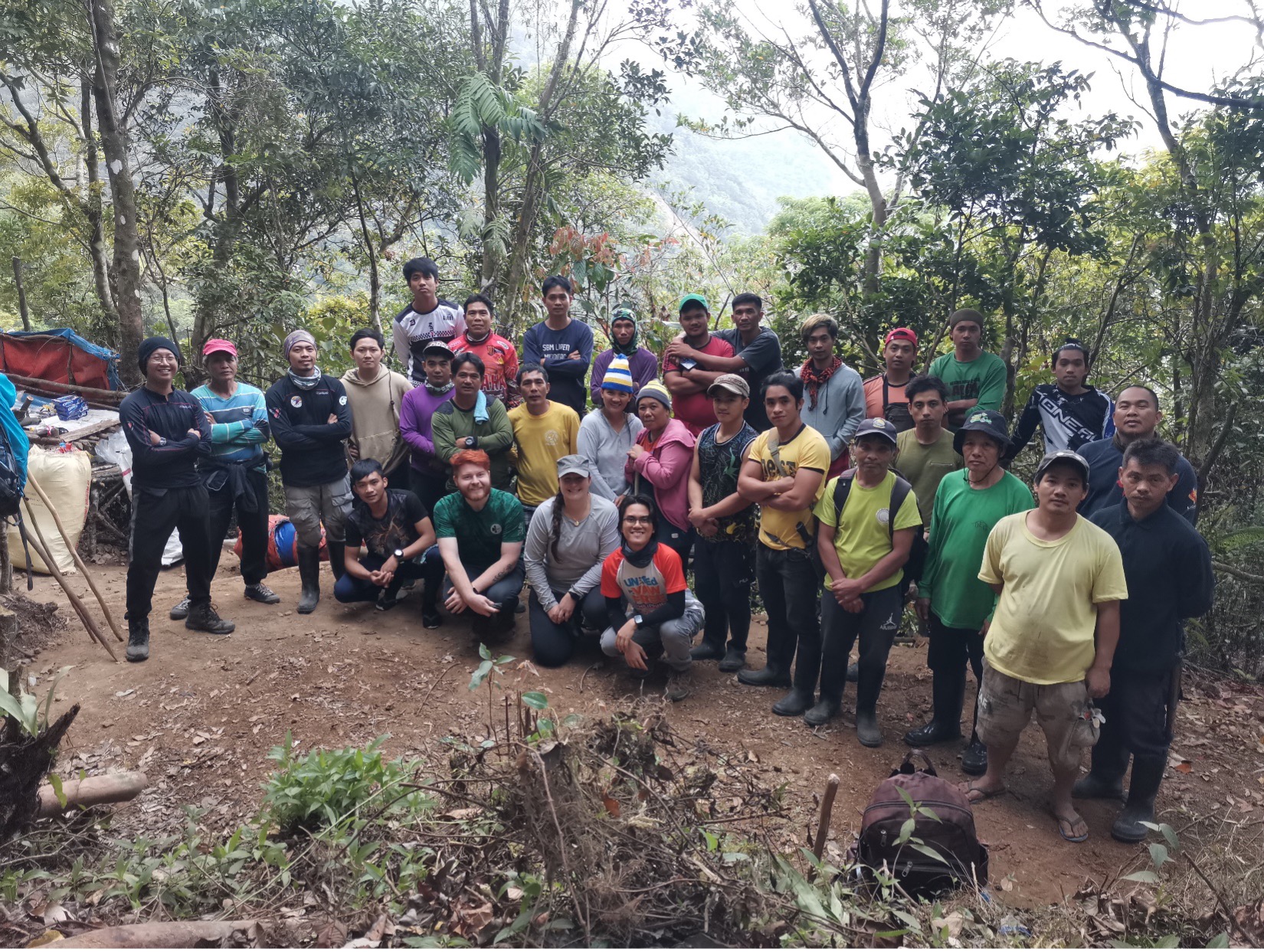
The team of UIC Center for the Recovery and Identification of the Missing investigators, colleagues from the National Museum of the Philippines, mountaineers and Kalanguya community members pose at a site on Mt. Timay-Ak. (Photo: Gregg Abbang/National Museum of the Philippines)
Students help provide closure
From its beginning, students have contributed deeply to the work of the center.
“It provides UIC students with an on-the-job training and professionalization element that is just invaluable,” Goodman said. “They start to see how the world works outside of academia. They’re developing real expertise and really learning what it is to do research.”
Jessica Bishop, who graduated in winter 2023 with a bachelor’s in anthropology, joined CRIM in 2022 and has helped compile and code data for the crash survivor project.
“I didn’t have much of a background in doing research, and I had to develop these skills that are really important to any anthropologist,” she said. “It’s been great to have this platform to learn the building blocks of research, and I think it has cemented the fact that I really like doing it.”
Another undergraduate student, Michael Colton, served in the military before coming to UIC and is studying anthropology and mathematics. With the center, he has worked on the crash survivor project and case narratives.
“It’s like the most frustrating book report you can think of,” Colton said. “It’s very challenging, but it’s also gratifying when you find those little nuggets and you can piece the story together. It’s nice to get done with the day and be able to say I have made real progress in helping people.”
That’s a sentiment echoed by all the CRIM researchers, who emphasized that the mission driving their work was fulfilling beyond the normal rewards of academic research.
“We all try to make it very clear that the underlying thread is the public service, the commitment to the families of the loved ones who were lost,” Reid said. “Even though it’s World War II, and every year it gets further and further removed, there are family members of our missing service members who are still very much engaged. We all have a commitment to that main mission.”
